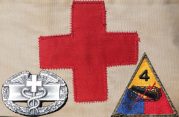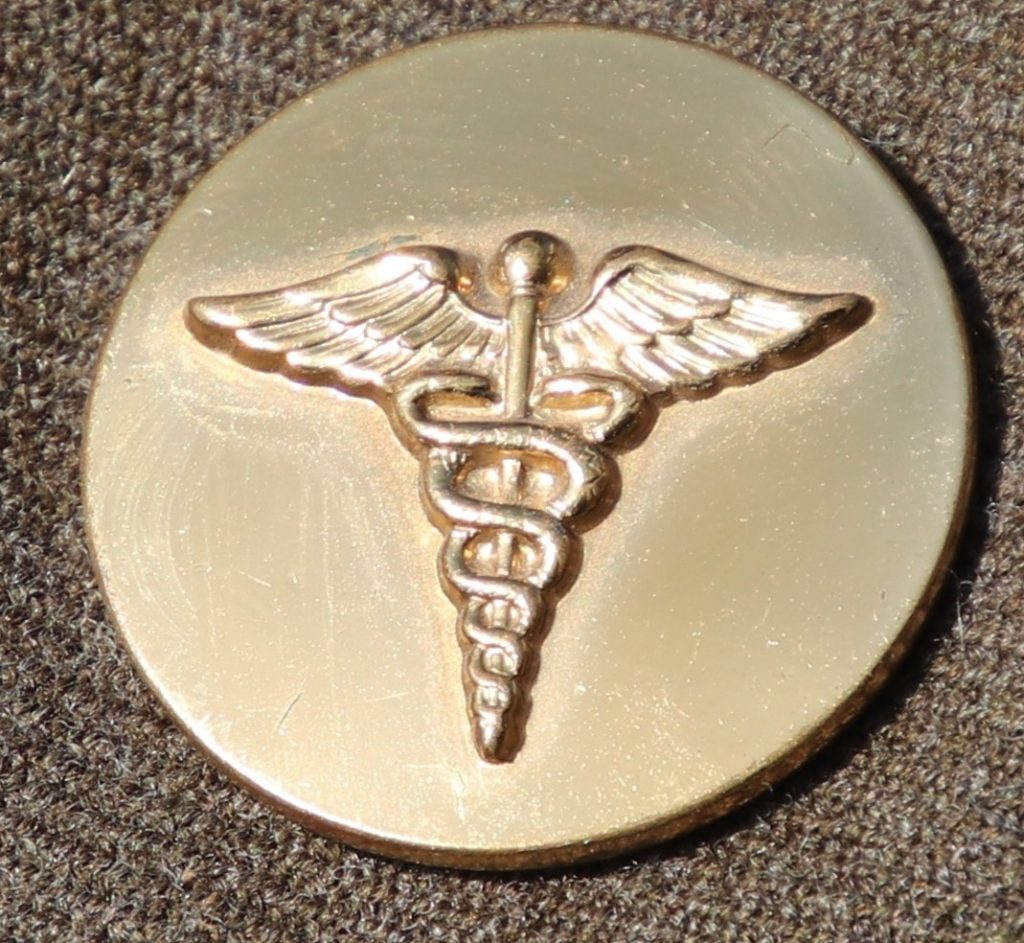This guide explains the different 4th Armored Division medical personnel databases I have created.
Master database
One of the major parts of my research was the creation of the Personnel Database. You can see the master database I have created in the 4th AD Medical Personnel Master Database. This shows you all the information I have collected on all the personnel of the Medical Department personnel of the 4th Armored Division during the entire period of World War Two.
So the timeframe for this database is the moment of activation of the 4th Armored Division (April 15th 1941) to VE-day (May 8th 1945). It, therefore, includes men who were transferred to other units before the 4th Armored Division entered combat. They were transferred, for example as a result of the reorganization of September 1943 (for more information on this click on this: 4th Armored Division Organization) or as a result of the Army’s recurring need to provide a cadre for new divisions to be activated.
Personnel lists during the campaigns
The second part of this project was to filter the men who served in the 4th Armored Division in the ETO (European Theater of Operations), from July 17th 1944 to VE-day.
The final step was to combine this filtered list with the TO&E of all the medical units in the division.
By combining these two it is possible to assign men to specific “jobs” within a unit.
This gives us much additional information. It shows us that some “jobs” had to be filled many times during the campaigns in Europe due to casualties. Especially the Medical Detachments of the Armored Infantry Battalions prove to be hit extremely hard during the War.
You can see how the Division Surgeon Staff tried to fill the gaps. Mostly by assigning replacements, but when these were not available, often by sending men on TD (temporary duty) as a stopgap measure.
We can find some men who were often reassigned this way. They really were the troubleshooters of the medical service.
You can see the results of these lists under the Personnel Page here: 4th AD Personnel Units Combat. Or you can see them under the Units pages.
If you or any of your relatives served in the Medical Department units of the 4th AD, I hope that these documents can help you to tell or discover a story. I am convinced that all the men mentioned in them have stories that are worth telling.
If you are looking for a specific person I suggest looking in the “master database” first. Behind his name you can find the unit(s) he served in. This information can than be used to look for the relevant unit lists.
Guide
I would like to give you a guide on how to read these documents.
First of all the documents are divided into columns:
(Unit TO&E): this column is the first column in all the Unit Personnel documents. It is not included in the “master database”: 4th AD Medical Personnel Master Database.
This column show all the different sections of a unit and the personnel assigned to it according to the TO&E (after September 1943). Any changes in the TO&E during the campaigns in Europe are also shown here.
These include official changes and improvisations within the division. For example: the 4th Armored Division took the Dental Officers away from the frontline Medical Detachments as they could not work effectively so close to the front. They were often replaced by a MAC officer acting as Assistant Battalion Surgeon.
You will notice that there is no TO&E for a Medical Detachment/ Staff with the Reserve Command and that all the personnel assigned to CCR/ Reserve Command are there on TD (Temporary Duty). This has to do with the doctrine and organization of the Armored Divisions in WW2. For more information on this: 4th Armored Division Organization.
When there are more than one name listed after an MOS it means that there was a change of personnel in this specific job. The replacements are listed below each other in chronological order.
Name: Surname, first name, (middle initial).
Serial number: Officer numbers start with “O”, Warrant Officer numbers start with “W”, Hospital Dietitian number starts with “R”.
Medical Department Corps: Medical Corps (MC), Dental Corps (DC), Medical Administrative Corps (MAC), Chaplain. These are noted for the officers.
Rank: The earliest rank I have found for one person. These can include sources like (YB42= Yearbook 1942) or (PR12-43= Personnel Roster December 1943).
Change in Rank: All subsequent changes, both promotions and demotions, are shown here in chronological order that I found evidence for. This means that a person can show a change from Tec5 to Tec3. If I found no evidence for a promotion (to Tec4) between these ranks, I have not included it even if it is probable. If I have found any dates for any change in rank, they are noted in (..).
MOS: This shows the earliest Military Occupational Specialty I have found for a person. For more information on the background of the MOS/SSN system: Military Occupational Specialty. If you are interested in a list of all the MOS-codes I have found during my research, click on: MOS list used.
Change in MOS: This shows all the subsequent changes in MOS I have found for a person, written in chronological order. If I have found any dates for the changes they are noted in (…). They can also include any source I have found the change in.
Unit(s): This column includes all the units within the 4th Armored Division a person served in during World War Two, noted in chronological order. They may include TD (Temporary Duty), DS (Detached Service), and can show a replacement/ reinforcement coming into the division via HQ/46 (Headquarters 46th Armored Medical Battalion) for a few days, before he was assigned to a unit. This was the standard method for receiving medical replacements. This way they could be introduced into the medical system of the division. They could also receive much needed training, if the combat situation allowed for it.
In the 4th AD Personnel Units Combat Database and Units documents, I have not assigned a replacement to HQ/46 for these “introduction” days. I have however included the replacements when I have found no evidence of the units they were assigned to after their “introduction days”with HQ&HQ-co.
Please note that these documents include the personnel as they served from 17th July 1944 to VE-Day. So any service in units prior to 17th July 1944 will show in this column but does not translate in assigning the person to a unit.
So, for example, a person could be assigned to Company A, 46th AMB in 1942 (YB42~Yearbook 1942), transferred to the medical detachment of the 8th Tank Battalion after the reorganization in September 1943 (PR11-43 ~Personnel Roster November 1943) and go into Normandy after another transfer as a member of the medical detachment of the 51st Armored Infantry Battalion. All these units would be shown in this column, but his name would only show up in the document of the 51st AIB.
Any transfers between 17th July 1944 and VE-day are both shown in this column and by placing these men in the lists of different units.
(Potential) Losses: This column includes all casualties, transfers, leaves, furloughs, etc. So all (potential) reasons a person is no longer present/ capable to perform his duty.
If possible I have included dates and locations of transfer or evacuation.
This column also shows RTD (Returned to Duty).
It is noteworthy that the abbreviation SLD is often used within the records of the 4th Armored Division. It probably stands for “Sick Light Duty”. I can’t prove that all the SLD casualties are Combat Exhaustion patients, but I can prove that all Combat Exhaustion patients were registered as SLD.
I have only used abbreviations in this column, even if the records show more detailed information on the wounds received. For a complete list of all the abbreviations used in the documents, use this link: List of Abbreviations.
Medals: This column shows all the medals and citations I have found during my research.
ABMC: This column shows the location if a person is buried in one of the ABMC cemeteries in Europe.
A final note: I have included all the information that I have found during my research. It is not complete. You can find many gaps in the documents. If you have any additional information for me I would like to ask you to please let me know by clicking here: Contact. Any information you can add to my research will help me to tell the stories of these heroes.

